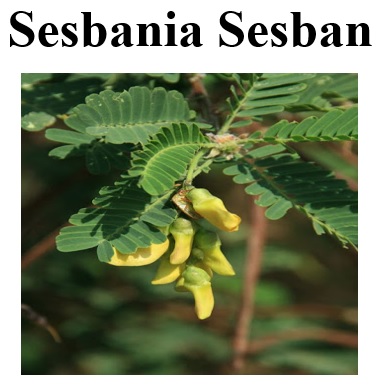Traditional Use, Phytochemistry and Pharmacology of Genus Sesbania: A Review
DOI:
https://doi.org/10.22034/advjscieng21021064%20Keywords:
Sesbania sesban, Anti-oxidant, Anti-diabetic, Anti-nociceptive, Anti-fertility, CNS stimulant, HepatoprotectiveAbstract
Genus sesbania has six different species, in which sesban is very common plant belonging to the family fabaceae commonly available in India, Malaysia, Indonesia, Philippines, and other tropical countries. It is mostly grown over the dikes among rice paddies, beside roadsides and in backyard vegetable gardens depicted as soft, semi or vaguely woody 1 - 8 m high perennial nitrogen fixing trees. It can grow up to 8 m achieving a diameter of around 12 cm. Its growth is exceptionally rapid to reaching a height of 4 - 5 m in just 6 months. This plant is very common because of its rapid growth besides its use as medicine or as well as fuel wood. This plant also contains several chemical constituents, which are useful for medicinal purpose including tri-terpenoids, steroids, glycosides saponins, tannins, vitamins, protein, carbohydrates and amino acids. This component possesses lots of medicinal activities such as anti-fertility, hepato-protective, central nervous system (CNS) stimulant, antioxidant, anti-microbial, anti-diabetic, anti-inflammatory, and anti-nociceptive. In this review, such features are described according to the importance of plants-based natural products in human life.
References
Gomase PV. Sesbania sesban Linn: a review on its ethnobotany, phytochemical and pharmacological profile. Asian Journal of Biomedical and Pharmaceutical Sciences. 2012;2:11-14.
Dobriyal RM, Narayana DB. Ayurvedic herbal raw material. Eastern Pharmacist. 1998;41:31-35.
Evans DO, Macklin B. Perennial sesbania production and use. Nitrogen Fixing Tree Association. 1990:41.
Pandhare RB, Sangameswaran B, Mohite PB, Khanage SG. Attenuating effect of Sesbania sesban (L) Merr. extract on neuropathic pain in streptozotocin-induced diabetic rats: an evidence of neuroprotective effects. Phytopharmacology. 2012;2:190-201.
Pandhare RB, Sangameswaran B, Mohite PB, Khanage SG. Antidiabetic activity of aqueous leaves extract of Sesbania sesban (L) Merr. in streptozotocin induced diabetic rats. Avicenna Journal of Medical Biotechnology. 2011;3:37-43.
Kathiresh M, Suganya P, Saravanakumar M. Antioxidant effect of Sesbaniasesban flower extract. International Journal of Pharmaceutical Sciences. 2011;3:1307-1312.
Dande PR, Talekar VS, Chakraborthy GS. Evaluation of crude saponins extract from leaves of Sesbania sesban (L.) Merr. for topical anti-inflammatory activity. International Journal of Research in Pharmaceutical Sciences. 2010;1:296-299.
Mythili T, Ravindhran R. Phytochemical screening and antimicrobial activity of Sesbaniasesban (L.) Merr. Asian Journal of Pharmaceutical and Clinical Research. 2012;5:18-23.
Nirmal SA, Bairagi JH, Patil AN, Pal SC, Upasani CD, Mandal SC. Antinociceptive activity of Sesbania Sesban (L) wood extracts, aprilimnary study. Indian Journal of Experimental Biology. 2012;50:61-64.
Singh SP. Fertility control of female through Sesbani sesbian seeds. The Journal of Research and Education in Indian Medicine. 1990;9:27-32.
Priya G, Saravanan K, Renuka C. Medicinal plants with potential antifertility activity - a review of sixteen years of herbal medicine research (1994-2010). International Journal of PharmTech Research. 2012;4:481-494.
Naik NN, Tare HL, Sherikar AK, Deore SR, Dama GY. Central nervous system stimulant effect of extracts obtained from the barks of Sesbania sesban. International Journal of Institutional Pharmacy and Life Sciences. 2011;1:77-92.
Kale I, Khan MA, Irfan Y, Veerana GA. Hepatoprotective potential of ethanolic and aqueous extract of flowers of Sesbania grandiflora (Linn) induced by CCl4. Asian Pacific Journal of Tropical Biomedicine. 2012;2:670-679.
Ghotekar S. A review on plant extract mediated biogenic synthesis of CdO nanoparticles and their recent applications. Asian Journal of Green Chemistry. 2019;3:187-200.
Ghotekar S, Pansambal S, Bilal M, Pingale SS, Oza R. Environmentally friendly synthesis of Cr2O3 nanoparticles: characterization, applications and future perspective - a review. Case Studies in Chemical and Environmental Engineering. 2021:100089.
Shah SM, Nisar Z, Nisar J, Akram M, Ghotekar S, Oza R. Nanobiomedicine: a new approach of medicinal plants and their therapeutic modalities. Journal of Materials and Environmental Science. 2021;12:1-14.
Nagore P, Ghotekar S, Mane K, Ghoti A, Bilal M, Roy A. Structural properties and antimicrobial activities of polyalthia iongifolia leaf extract-mediated CuO nanoparticles. BioNanoScience. 2021;11:579-589.
Ghotekar S, Pagar K, Pansambal S, Murthy HA, Oza R. A review on eco-friendly synthesis of BiVO4 nanoparticle and its eclectic applications. Advanced Journal of Science and Engineering. 2020;1:106-112.
Pagar T, Ghotekar S, Pansambal S, Pagar K, Oza R. Biomimetic Synthesis of CuO Nanoparticle using Capparis decidua and their Antibacterial Activity. Advanced Journal of Science and Engineering. 2020;1:133-137.
Ghotekar S, Pagar T, Pansambal S, Oza R. A review on green synthesis of sulfur nanoparticles via plant extract, characterization and its applications. Advanced Journal of Chemistry B. 2020;2:128-143.
Ghotekar S. Plant extract mediated biosynthesis of Al2O3 nanoparticles-a review on plant parts involved, characterization and applications. Nanochemistry Research. 2019;4(2):163-9.

Downloads
Published
How to Cite
Issue
Section
License
Copyright (c) 2021 Advanced Journal of Science and Engineering

This work is licensed under a Creative Commons Attribution 4.0 International License.
This work is licensed under a Creative Commons Attribution 4.0 International License (CC-BY 4.0).



